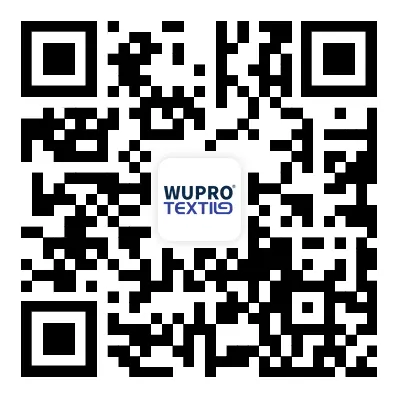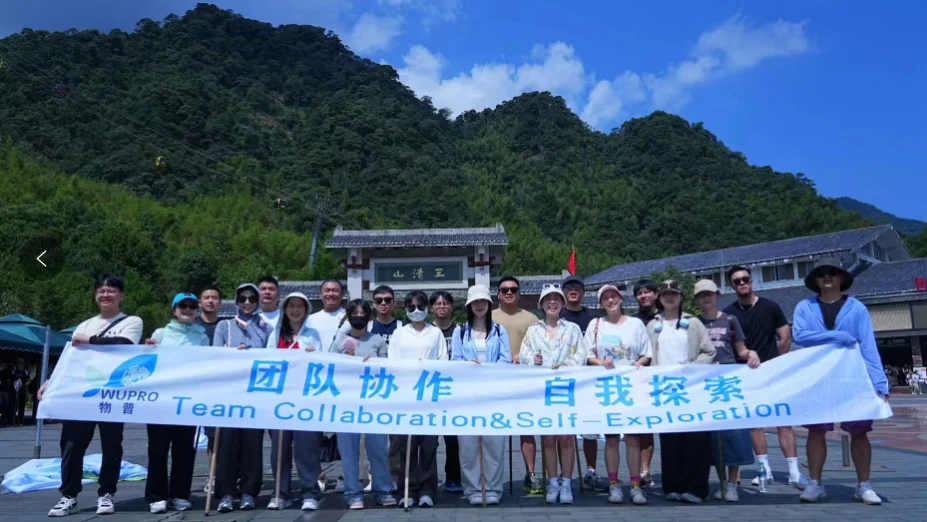How Moisture-Wicking Fabrics Enhance Comfort in Everyday Wear
How Moisture-Wicking Fabrics Enhance Comfort in Everyday Wear
Table of Contents
Introduction to Moisture-Wicking Fabrics
Understanding How Moisture-Wicking Works
The Benefits of Moisture-Wicking Fabrics for Comfort
Effective Moisture Management in Everyday Wear
Breathability and Its Role in Comfort
Applications of Moisture-Wicking Fabrics
Choosing the Right Moisture-Wi
Jun 06,2025

How Moisture-Wicking Fabrics Enhance Comfort in Everyday Wear
Table of Contents
- Introduction to Moisture-Wicking Fabrics
- Understanding How Moisture-Wicking Works
- The Benefits of Moisture-Wicking Fabrics for Comfort
- Effective Moisture Management in Everyday Wear
- Breathability and Its Role in Comfort
- Applications of Moisture-Wicking Fabrics
- Choosing the Right Moisture-Wicking Fabric for You
- Care and Maintenance of Moisture-Wicking Fabrics
- Conclusion
- Frequently Asked Questions (FAQs)
Introduction to Moisture-Wicking Fabrics
In today’s fast-paced world, **comfort** in clothing has become a priority for many individuals. With the rising demand for active lifestyles, the textile industry has innovated to meet these needs. **Moisture-wicking fabrics** are at the forefront of this revolution, designed specifically to provide relief from sweat and enhance the overall wearing experience. This article delves into the science behind these fabrics, their benefits, and how they can improve comfort in everyday wear.
Understanding How Moisture-Wicking Works
Moisture-wicking fabrics are engineered with a unique ability to pull moisture away from the skin. This process involves two main features:
Capillary Action
The fundamental principle behind moisture-wicking is **capillary action**, which allows the fabric to absorb moisture from the skin’s surface and transport it to the outer layer. Here’s how it works:
- **Fiber Structure**: These fabrics are often made from synthetic fibers, such as polyester or nylon, which have a hydrophobic quality. This means they repel water, allowing moisture to travel along the fibers instead of soaking into the fabric.
- **Surface Area**: The increased surface area of these fibers facilitates a quicker evaporation process, ensuring that moisture is swiftly moved away from the body.
Evaporation Process
Once the moisture reaches the outer layer of the fabric, it evaporates into the air. This not only keeps the skin dry but also regulates body temperature, making it ideal for both vigorous activities and daily wear.
The Benefits of Moisture-Wicking Fabrics for Comfort
The transition from traditional fabrics to moisture-wicking materials brings numerous benefits that enhance comfort:
1. Enhanced Dryness
One of the primary benefits is the **enhanced dryness** it provides. Unlike cotton, which absorbs and retains moisture, moisture-wicking fabrics enable the body to remain dry even during intense physical activities or on warm days.
2. Temperature Regulation
Moisture-wicking fabrics are excellent at regulating **body temperature**. By moving sweat away from the skin and evaporating it quickly, these fabrics help maintain a comfortable microclimate, preventing overheating or chilling.
3. Odor Control
Many moisture-wicking fabrics come with odor-resistant features that inhibit the growth of bacteria. This means that clothing remains fresher for longer, reducing the need for frequent washing and allowing you to feel more confident throughout the day.
4. Increased Comfort During Movement
These fabrics are often lightweight and flexible, providing a **greater range of motion**. Whether you’re at the gym or running errands, you’ll find that moisture-wicking materials offer unrestricted movement without the discomfort of clingy, wet fabrics.
Effective Moisture Management in Everyday Wear
Effective moisture management is crucial in everyday clothing. Here’s how moisture-wicking fabrics excel at this:
1. Versatile Use Cases
Moisture-wicking fabrics are not limited to athletic wear. They are increasingly being incorporated into casual and formal attire, making them a versatile choice for various occasions—from the gym to the office.
2. Layering Capability
These fabrics work well as base layers, allowing for comfortable layering during colder months. They trap warmth while simultaneously managing moisture, ensuring comfort regardless of temperature fluctuations.
3. Suitable for All Seasons
The breathability and moisture management capabilities of these fabrics make them suitable for year-round wear. In the summer, they keep you cool and dry; in the winter, they provide a thermal layer that promotes warmth without excess moisture.
Breathability and Its Role in Comfort
Breathability is a critical factor in determining the comfort level of any fabric. Moisture-wicking textiles are designed to allow air to flow freely, promoting ventilation.
1. Importance of Airflow
Airflow prevents the build-up of heat and moisture, which can lead to discomfort and skin irritation. The breathable nature of moisture-wicking fabrics ensures that wearers feel fresh and comfortable all day long.
2. Construction Techniques
Manufacturers employ various construction techniques to enhance breathability, such as:
- **Mesh Panels**: Strategic placement of mesh panels allows for additional airflow.
- **Open Weave Textures**: These textures facilitate enhanced ventilation while maintaining strength and durability.
Applications of Moisture-Wicking Fabrics
Moisture-wicking fabrics are used across a wide array of applications, including:
1. Activewear
Gyms, sports, and outdoor activities are where moisture-wicking fabrics shine. They are essential for anyone engaging in physical exertion, as they help maintain comfort throughout the activity.
2. Everyday Clothing
Increasingly, everyday clothing lines incorporate moisture-wicking fibers, allowing consumers to enjoy the benefits of these advanced textiles in casual and business attire.
3. Performance Gear
Athletes and fitness enthusiasts rely on these fabrics for performance gear. Competitive sports apparel often features moisture-wicking properties to enhance performance through better moisture management.
4. Sleepwear and Underwear
Moisture-wicking properties are also beneficial in sleepwear and underwear, where comfort and dryness can significantly impact the quality of rest.
Choosing the Right Moisture-Wicking Fabric for You
Selecting the appropriate moisture-wicking fabric can enhance your wearing experience significantly. Consider the following factors:
1. Fabric Composition
Different blends of synthetic fibers can affect moisture-wicking capabilities. Look for options with a higher percentage of polyester or specialized blends designed for enhanced performance.
2. Weight and Thickness
The weight and thickness of the fabric impact comfort. Lightweight options are ideal for hot weather, while thicker fabrics provide warmth during colder months.
3. Fit and Style
Choose a fit that suits your personal style. From loose-fitting tees to form-fitting base layers, the right cut can enhance both comfort and appearance.
Care and Maintenance of Moisture-Wicking Fabrics
To maintain the performance of moisture-wicking fabrics, proper care is crucial:
1. Washing Instructions
Follow specific washing instructions provided by the manufacturer. Generally, it’s best to wash moisture-wicking garments in cold water and avoid fabric softeners that can hinder moisture-wicking properties.
2. Drying Techniques
Air drying is preferable; however, if using a dryer, opt for a low heat setting to prevent damage. High heat can degrade the fibers and reduce effectiveness.
3. Storage
Store moisture-wicking garments in a cool, dry place to prevent mildew or odors. Avoid cramming them into tight spaces to maintain their shape.
Conclusion
Moisture-wicking fabrics represent a significant advancement in textile technology, enhancing comfort in everyday wear. By effectively managing moisture, regulating temperature, and promoting breathability, these innovative materials provide a superior wearing experience. As more individuals seek comfort in their clothing choices, moisture-wicking fabrics have become indispensable for an active and comfortable lifestyle. Embrace the benefits of these fabrics and elevate your comfort level today.
Frequently Asked Questions (FAQs)
1. What are moisture-wicking fabrics made of?
Moisture-wicking fabrics are typically made from synthetic fibers such as polyester, nylon, or blends that enhance moisture management capabilities.
2. How do I know if a fabric is moisture-wicking?
Look for labels that specify moisture-wicking properties or conduct a simple test by splashing water on the fabric; if it beads up and rolls away, it’s likely moisture-wicking.
3. Can moisture-wicking fabrics be used in winter?
Yes, moisture-wicking fabrics can be effectively layered for winter wear, providing warmth and moisture management.
4. Do moisture-wicking fabrics require special washing?
Generally, yes. It’s best to wash them in cold water and avoid fabric softeners to maintain their properties.
5. Are there any downsides to moisture-wicking fabrics?
Some moisture-wicking fabrics may be less durable than traditional fabrics and might require more careful maintenance to preserve their functionality.
PREVIOUS:
Contact Us
E-mail:
Address:
1302, Zhongjun Fortune Center, Fengli Street, Shishi, Fujian, China.









